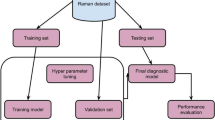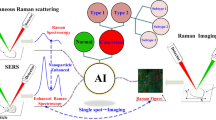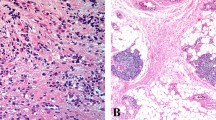Abstract
The most common primary intraocular childhood cancer that affects children’s and adults’ vision worldwide is retinoblastoma. It is uveal melanoma when contrasting and contrasting with adults. It is a lethal tumor that has the potential to enlarge and destroy the eye and the structures that surround it. As a result, early detection of retinoblastoma in young children is essential. The research's primary impact is the identification of retinal tumor cells. It's also important to determine the tumor's stages and group. Ophthalmologists can better predict and diagnose retinoblastoma cancer at an earlier stage based on the proposed systems. Utilizing machine learning techniques, this study proposes a novel technique for detecting retinoblastoma tumors utilizing radioactive polymeric material in Nanostructure analysis with ion beam based raman spectroscopy. The region of the tumor is examined using raman spectroscopy, and its characteristics are then extracted and categorized. Convolutional Principal kernel networks are used for the tumor feature extraction, and an ensemble of multilayer Q-regressive back propagation networks is used for the classification. For various retinoblastoma datasets, the experimental analysis is conducted in terms of training accuracy, RMSE, F_measure, recall, and AUC. The proposed technique attained training accuracy of 95%, RMSE of 55%, F_measure of 65%, recall of 58%, AUC of 49%.










Similar content being viewed by others
Data availability
All the data’s available in the manuscript.
References
Agrawal, R., Kulkarni, S., Walambe, R., Deshpande, M., Kotecha, K.: Deep dive in retinal fundus image segmentation using deep learning for retinopathy of prematurity. Multimed. Tools Appl. 81(8), 11441–11460 (2022)
Butt, M.M., Iskandar, D.A., Abdelhamid, S.E., Latif, G., Alghazo, R.: Diabetic retinopathy detection from fundus images of the eye using hybrid deep learning features. Diagnostics 12(7), 1607 (2022)
Degadwala, S., Vyas, D., Dave, H. S., Patel, V., & Mehta, J. N. (2022). Eye Melanoma Cancer Detection and Classification Using CNN. In Second International Conference on Image Processing and Capsule Networks: ICIPCN 2021 2 (pp. 489–497). Springer International Publishing.
Dhanagopal, R., Vasanth Raj, P.T., Suresh Kumar, R., Mohan Das, R., Pradeep, K., Kwadwo, O.A.: An efficient retinal segmentation-based deep learning framework for disease prediction. Wirel. Commun. Mobile Comput. 2022, 1–10 (2022). https://doi.org/10.1155/2022/2013558
Kaliki, S., Vempuluru, V.S., Ghose, N., Patil, G., Viriyala, R., Dhara, K.K.: Artificial intelligence and machine learning in ocular oncology: retinoblastoma. Indian J. Ophthalmol. 71(2), 424–430 (2023)
Maram, B., Sahukari, J., Lokesh, T.: A framework for glaucoma diagnosis prediction using retinal thickness using machine learning. In: Smart technologies for power and green energy: proceedings of STPGE 2022, pp. 61–77. Springer Nature Singapore, Singapore (2022)
Nusinovici, S., Rim, T.H., Yu, M., Lee, G., Tham, Y.C., Cheung, N., Cheng, C.Y.: Retinal photograph-based deep learning predicts biological age, and stratifies morbidity and mortality risk. Age Ageing 51(4), 65 (2022)
Prananda, A.R., Frannita, E.L., Hutami, A.H.T., Maarif, M.R., Fitriyani, N.L., Syafrudin, M.: Retinal nerve fiber layer analysis using deep learning to improve glaucoma detection in eye disease assessment. Appl. Sci. 13(1), 37 (2022)
Rajan, R., Kumar, S.N.: IoT based optical coherence tomography retinal images classification using OCT Deep Net2. Meas. Sens. 25, 100652 (2023)
Reis, H.C., Turk, V., Khoshelham, K., Kaya, S.: InSiNet: a deep convolutional approach to skin cancer detection and segmentation. Med. Biol. Eng. Comput. 60, 1–20 (2022)
Saini, M., Susan, S.: Diabetic retinopathy screening using deep learning for multi-class imbalanced datasets. Comput. Biol. Med. 149, 105989 (2022)
Santos-Bustos, D.F., Nguyen, B.M., Espitia, H.E.: Towards automated eye cancer classification via VGG and ResNet networks using transfer learning. Eng. Sci. Technol. Int. J. 35, 101214 (2022)
Saravanan, V., Samuel, R.D.J., Krishnamoorthy, S., Manickam, A.: Deep learning assisted convolutional auto-encoders framework for glaucoma detection and anterior visual pathway recognition from retinal fundus images. J. Ambient Intell. Humaniz. Comput. (2022). https://doi.org/10.1007/s12652-021-02928-0
Sedik, A., El-Hag, N. A., El-Hoseny, H. M., El Banby, G., Khalaf, A. A., El-Samie, F. E. A., & El-Shafai, W. Retinal disorder diagnosis based on hybrid deep learning models. Available SSRN 4111795.
Sheet, S.S.M., Tan, T.S., As’ari, M.A., Hitam, W.H.W., Sia, J.S.: Retinal disease identification using upgraded CLAHE filter and transfer convolution neural network. ICT Express 8(1), 142–150 (2022)
Singh, L.K., Khanna, M., Thawkar, S., Singh, R.: Collaboration of features optimization techniques for the effective diagnosis of glaucoma in retinal fundus images. Adv. Eng. Softw. 173, 103283 (2022)
Telecan, T., Andras, I., Crisan, N., Giurgiu, L., Căta, E.D., Caraiani, C., Lupsor-Platon, M.: More than meets the eye: using textural analysis and artificial intelligence as decision support tools in prostate cancer diagnosis—a systematic review. J. Personal. Med. 12(6), 983 (2022)
Thanki, R.: A deep neural network and machine learning approach for retinal fundus image classification. Healthcare Analytics 3, 100140 (2023)
Tustison, N.J., Avants, B.B., Cook, P.A., Zheng, Y., Egan, A., Yushkevich, P.A., Gee, J.C.: N4ITK: Improved N3 Bias Correction. IEEE Transactions on Medical Imaging 29(6), 1310-1320. https://doi.org/10.1109/TMI.2010.2046908
Zekavat, S.M., Raghu, V.K., Trinder, M., Ye, Y., Koyama, S., Honigberg, M.C., Natarajan, P.: Deep learning of the retina enables phenome-and genome-wide analyses of the microvasculature. Circulation 145(2), 134–150 (2022)
Zhou, W.D., Dong, L., Zhang, K., Wang, Q., Shao, L., Yang, Q., Wei, W.B.: Deep learning for automatic detection of recurrent retinal detachment after surgery using ultra‐widefield fundus images: a single‐center study. Adv. Intell. Syst. 4(9), 2200067 (2022). https://doi.org/10.1002/aisy.202200067
Funding
This research not received any fund.
Author information
Authors and Affiliations
Contributions
SS Conceived and design the analysis Writing- Original draft preparation. SRM Collecting the Data, DP Contributed data and analysis stools, AB Performed and analysis, MF Performed and analysis, SS Wrote the Paper, AA Editing and Figure Design.
Corresponding author
Ethics declarations
Conflict of interest
The authors declare that they have no known competing financial interests or personal relationships that could have appeared to influence the work reported in this paper.
Ethical approval
This article does not contain any studies with animals performed by any of the authors.
Additional information
Publisher's Note
Springer Nature remains neutral with regard to jurisdictional claims in published maps and institutional affiliations.
Rights and permissions
Springer Nature or its licensor (e.g. a society or other partner) holds exclusive rights to this article under a publishing agreement with the author(s) or other rightsholder(s); author self-archiving of the accepted manuscript version of this article is solely governed by the terms of such publishing agreement and applicable law.
About this article
Cite this article
Sur, S., Sudhakara Reddy, M., Paikaray, D. et al. Nanostructure analysis in polymeric materials with ion beam based Raman spectroscopy for retinoblastoma tumor imaging using ensemble machine learning technique. Opt Quant Electron 55, 940 (2023). https://doi.org/10.1007/s11082-023-05167-z
Received:
Accepted:
Published:
DOI: https://doi.org/10.1007/s11082-023-05167-z




